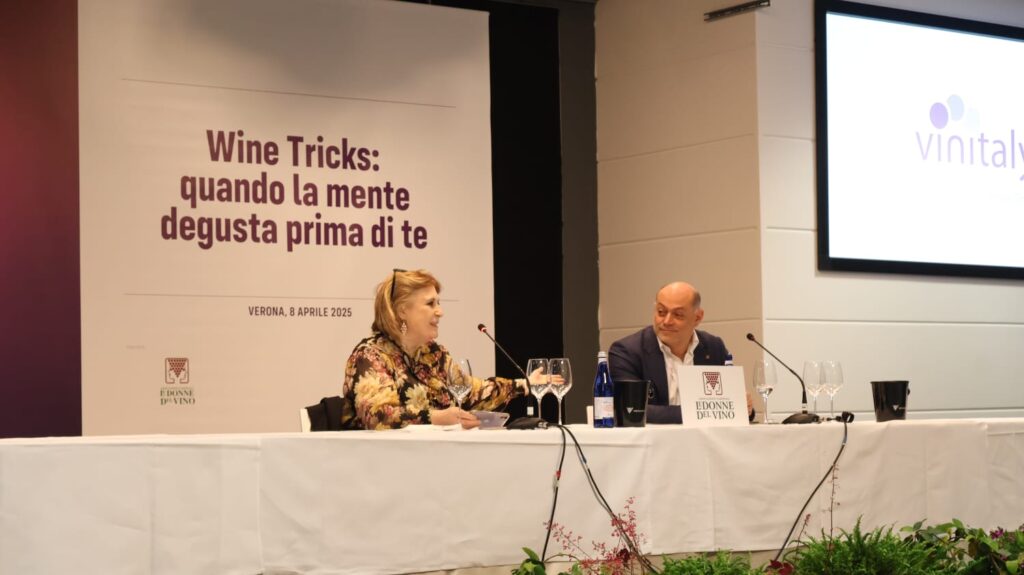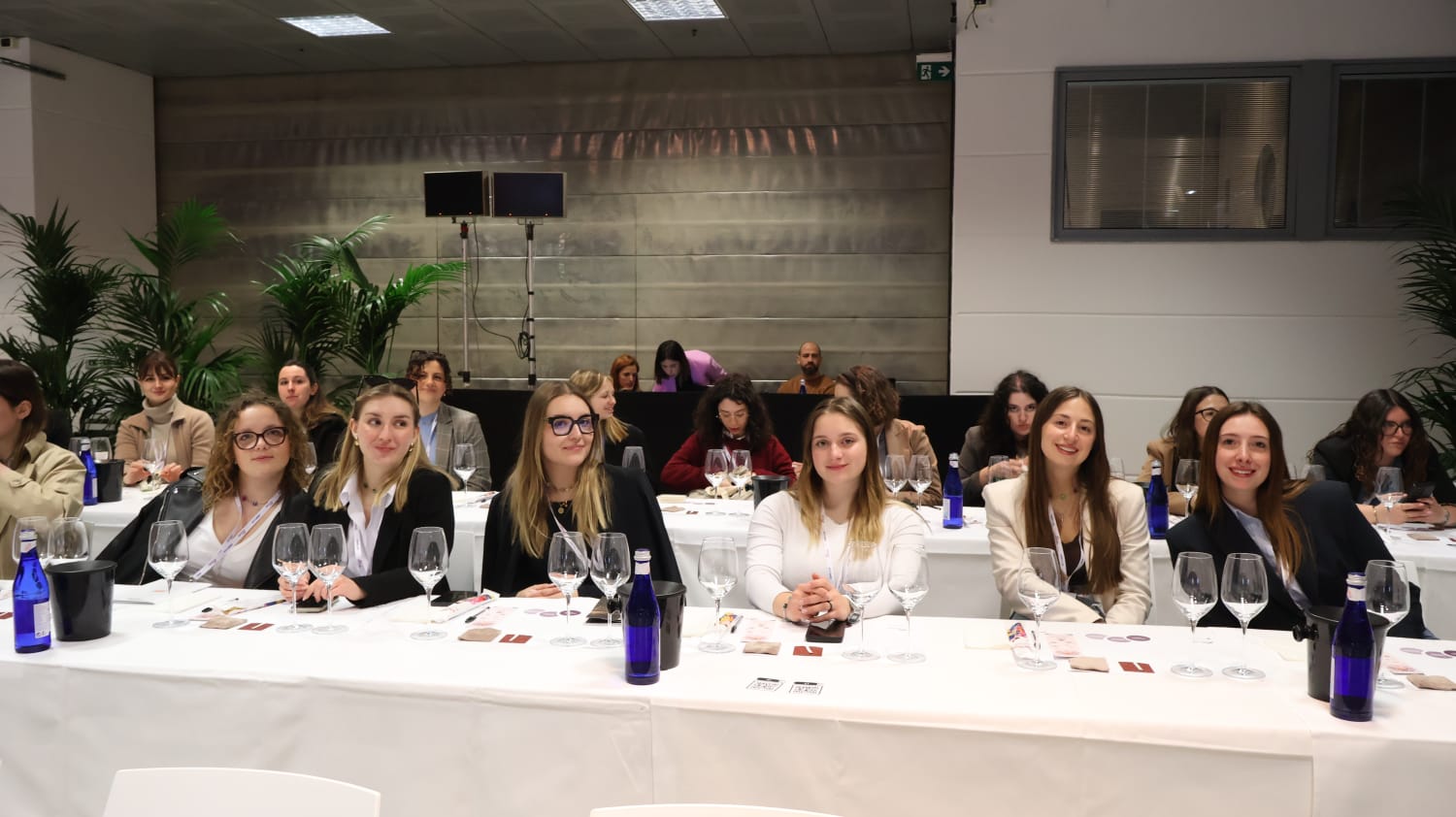Vinitaly 2025 became the stage for a groundbreaking exploration into the emotional world behind wine consumption, as Italy’s next generation of wine lovers took center stage.
Verona, April 8 — What does wine mean to today’s youth? Do they really understand what’s in their glass? At this year’s Vinitaly, the National Association Le Donne del Vino teamed up with Milan’s IULM University to delve into the perceptions, habits, and emotional drivers of young Italian wine consumers — and the results may surprise you.
Presented during the immersive tasting event “Wine Tricks: When the Mind Tastes Before You Do”, the research titled “Wine and Young Italians: Habits, Purchasing Behavior, and Perceptions” offers a detailed snapshot of Generation Z’s relationship with wine. Led by Professor Vincenzo Russo, a specialist in Consumer Psychology and Neuromarketing, the study surveyed 188 participants aged 18 to 25.
The findings paint a picture of a curious yet cautious generation. While fascinated by wine, young Italians report limited knowledge — scoring an average of just 2.99 out of 6 in self-assessed wine competence. Red wine tops their preferences (40.8%), closely followed by white (38%). Consumption is largely tied to social settings: 61% drink wine at restaurants and 62% at home, with far fewer choosing bars, wine shops, or clubs.

Wine as a Social Companion, Not a Status Symbol
When it comes to buying wine, Gen Z’s motivations are clear: celebration (19%), time with friends and family (18.2%), and gifting (15.9%) are key triggers. Price matters too — most stick to bottles priced between €10 and €25 — while branding and sustainability play a secondary role in decision-making.
Contrary to previous generations, wine holds little symbolic weight for Gen Z. Statements like “wine makes me feel powerful” or “it enhances my social status” scored low, reflecting a more grounded and experience-driven perspective. Purchase decisions are primarily influenced by personal experience (20.2%), word-of-mouth (19.5%), and price (19.4%).
Wine Tricks: A Journey into the Mind of the Consumer
Turning data into experience, the Wine Tricks event invited participants into a multi-sensory world where psychology met enology. A live eye-tracking demonstration revealed how a volunteer’s brain reacted to a virtual wine shelf. Sensory tests, including one that measured taste sensitivity and another that exposed participants to perceptual illusions, underscored just how deeply unconscious processes influence our choices — long before the first sip.
“Wine is not just a beverage, it’s an emotional and cultural artifact,” said Professor Russo. “Our minds start shaping the experience even before we taste it. Through tools like EEG, eye-tracking, and psychophysiological testing, we can now understand how context and expectation alter perception — especially among young consumers.”
A Call for Empathy and Engagement
Daniela Mastroberardino, President of Le Donne del Vino, emphasized the need for a shift in communication strategies. “Young people aren’t just consumers to be targeted — they are individuals to be understood. They seek meaning, stories, and emotional resonance. With Wine Tricks, we wanted to show just how powerful the mind is in shaping consumer behavior, and how the wine industry can become more empathetic and authentic in its messaging.”
As the industry evolves, this collaboration between academic insight and sector expertise offers a clear path forward: one that blends tradition with innovation, and taste with the psychology of experience.

